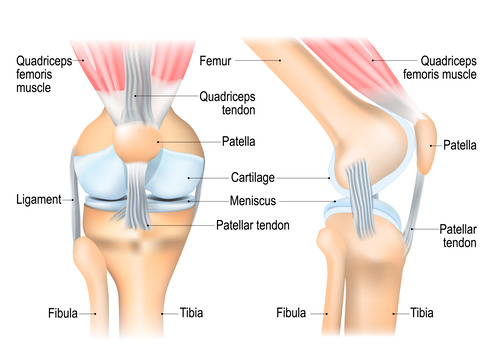Undiagnosed knee problems
What causes knee pain?

Knee pain is relatively common. The knee joint is a hinge joint between the shin and thigh bones with the knee cap at the front. Smooth cartilage covers the ends of the bones and reduces friction. Extra shock absorption is provided by thick cartilages between the shin and thigh bones which are called menisci. The knee ligaments help to hold the joint stable and these are reinforced by the surrounding muscles which also help to produce movement at the joint. Knee pain can result from an isolated problem or a combination of joint, ligament, cartilage or muscle problems.
Knee pain can be caused by an injury or gradually build up over time. In most cases it has a simple cause and resolves in a short period of time with self-management approaches as listed below which can be carried out at home. Some conditions can be more persistent such as osteoarthritis however these can often be self-managed successfully too.
What can I do to help my knee pain?
Minor injuries such as sprains and strains can be managed at home and should start to improve within a few days. The PRICE regime is recommended.
The advice below aims to minimise symptoms and facilitate the healing.
Pain relief
Controlling your pain to allow normal movement of the joint is extremely important in the early stages. Simple over the counter pain relief such as paracetamol, ibuprofen and gels can help. The following may help:
If you need to take regular pain relief for a long period of time, you should consult your pharmacist or GP.
Exercise
It is important to keep moving to stop the joint stiffening and your muscles weakening. Exercise improves joint nutrition, strengthens muscle tissues and releases the body’s own natural painkillers, endorphins. Often simply reducing the activity which caused the problem or stopping it temporarily can greatly improve your pain. You should aim to gradually re-introduce this activity and build it back up slowly. It is important to get the right balance, doing too much exercise may cause your pain to flare up, but too little may cause joint stiffness and muscle weakness.
A long term commitment to exercise is ideal; it is important to try different types so you find what you enjoy most.
Weight management
As the knee is a load bearing joint, many knee conditions are exacerbated by excess weight. To calculate your BMI, using the NHS BMI calculator. *Link to general health weight loss page*
When should I seek help?
If you have had a high impact injury which has resulted in immediate swelling or bruising, an audible pop or sound, severe pain and inability to weight bear through your leg please visit A&E.
If you suffer a high impact injury but develop significant swelling some hours or a day later, please see your GP or First Contact Physiotherapist at your GP surgery.
- If the pain is constant and severe, with an inability to weight bear and significant night time pain which stops you sleeping
- If the joint is red, hot swollen or you have infection signs such as fever
- If you have numbness or tingling in your leg
- If you develop your knee pain at the same time as feeling generally unwell or having a fever
- If pain fails to settle after engaging in management suggested above over 3 months
Osteoarthritis, Patellofemoral pain (anterior knee pain), Tendonopathy, ligament and meniscal or cartilage injuries can all cause ongoing knee pain.
Self- management using the above advice and the exercises below will solve the problem in most cases. However, if this fails to help please make an appointment with your GP or first contact physiotherapist at your GP surgery.
Recommended exercises
Isometric straight leg hold
Isometric straight leg hold

- Lying with one leg flexed and the other extended, lift your heel off the ground (keeping your knee on extension)
- Lift your heel 10 to 15cm and hold
Note: Do not arch the lower back while you lift your leg.
© Image credit: Wibbi
Sit to stand
Sit to stand

- Sit on a chair that has been placed against a wall to prevent it from moving
- Fold your arms across your chest
- With your feet slightly apart, lean forward, so your shoulders are over your feet and stand up fully
- Slowly return to sitting
© Image credit: Wibbi
Isometric quadriceps
Isometric quadriceps

- Lie down with your legs extended
- Tighten the quadriceps muscle on the front of your thighs by trying to the knee downward
- Hold for the recommended time
- Relax
Note: Do not hold your breath.
© Image credit: Wibbi
Knee extension
Knee extension

- Lie down on your back with a foam roller behind your thigh, just above the knee
- Push your thigh down into roller and lift your heel up off the floor as high as you can without lifting the leg from the roller
- Lower your leg to the starting position and repeat
© Image credit: Wibbi


